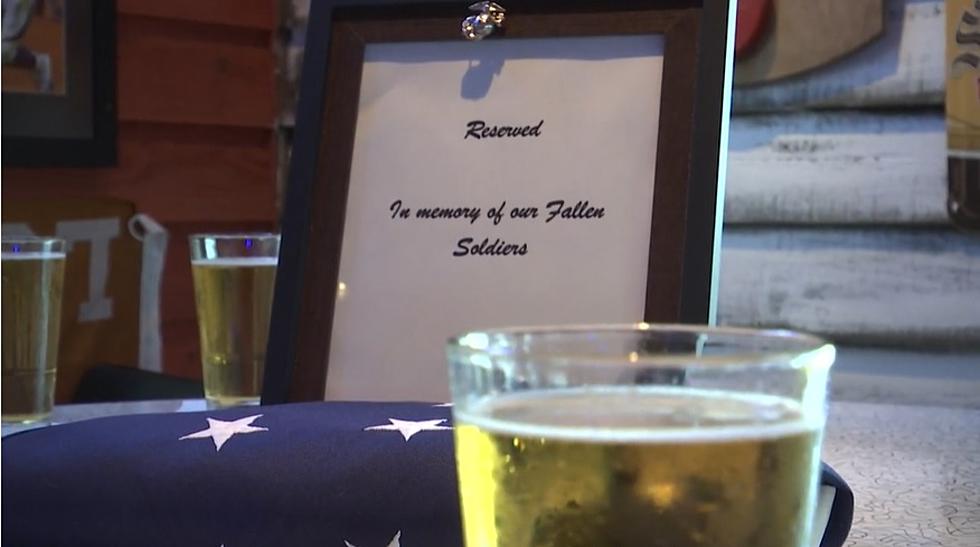
Chad’s Morning Brief: Another Deadly Shooting at Fort Hood, EPA Test Subjects Not Always Told of Lethal Risks, and Other Top Stories
Here is your Morning Brief for the morning of April 3, 2014. Give me your feedback below and tune in to The Chad Hasty Show for these and many more topics from 8:30 to 11am. Remember, you can listen online at KFYO.com or on your iPhone/Android with the radioPup App.
Shooting At Fort Hood
A gunman killed 3 soldiers and then himself yesterday at Fort Hood. According to the Dallas Morning News 16 others were wounded in the shooting that brought back memories of the attack on Forth Hood in 2009 that left 13 dead.
A soldier being treated for mental health issues opened fire Wednesday at Fort Hood, killing three people and wounding 16 before fatally shooting himself at the same military base where 13 people died in a 2009 attack, authorities said.
The gunman was being evaluated for PTSD, but a diagnosis had not been confirmed, said Lt. Gen. Mark A. Milley, the senior officer on the base.
U.S. Rep. Michael McCaul, R-Austin and chairman of the House Homeland Security Committee, identified the shooter as Ivan Lopez, 34. Fort Hood officials had not formally released his name, pending notification of next of kin.
Officials said Lopez, a military truck driver, was dressed in his standard-issue green camouflage uniform at the time of the attack.
Milley said the shooter “had behavioral health and mental health issues.” He said the soldier, who had self-reported a traumatic brain injury and was taking anti-depressants, had been under examination to determine whether he had post-traumatic stress disorder. “We are digging deep into his background,” Milley said.
Lopez, who was married, served in Iraq for four months in 2011. He had arrived at Fort Hood in February from another base. Police spent Wednesday night searching his apartment in nearby Killeen.
There was no indication that the incident was terrorism, although the attack was still under investigation and nothing had been ruled out, Milley said.
“Events of the past have taught us many things at Fort Hood,” Milley said. “We know the community is strong and resilient and know [those] who have served so bravely in combat over last 13 years are strong and we will get through this.”
Milley said the soldier, who was assigned to the 13th Sustainment Command expeditionary unit, opened fire with a .45-caliber Smith & Wesson semiautomatic pistol that had been purchased recently but was not authorized to be brought on the base.
Officials believe he walked into one of the unit buildings in the 1st Medical Brigade area just after 4 p.m., opened fire, got into a vehicle and fired from it, got out, walked into another building and fired again.
He was eventually confronted by a military police officer in a parking lot. He put his hands up but then pulled a gun from under his jacket. “She [the officer] engaged,” Milley said, and then the soldier put the gun to his head and shot himself.
The injured were being treated at Carl R. Darnall Army Medical Center on the base and at Scott & White Memorial Hospital in Temple, a level-one trauma center.
Late Wednesday night, Scott & White was treating eight patients, and expecting one more. Three were in critical condition and five in serious condition. All were in the intensive-care unit. The injuries ranged from single to multiple gunshot wounds to the extremities, abdomen, chest and neck.
First responders, military police and others were on the scene of the shooting within fifteen minutes. The base remained on lockdown for hours.
Obama ‘heartbroken’
President Barack Obama said he was “heartbroken that something like this might have happened again.” Speaking during a fundraising trip to Chicago, he pledged “to get to the bottom of exactly what happened.”
Obama reflected on the sacrifices that troops stationed at Fort Hood have made — including during multiple tours to Iraq and Afghanistan.
“They serve with valor, they serve with distinction, and when they’re at their home base, they need to feel safe,” Obama said. “We don’t yet know what happened tonight, but obviously that sense of safety has been broken once again.”
Gov. Rick Perry said in a written statement that Texans’ first priority is caring for the victims and families.
“Fort Hood has proven its resilience before, and will again,” the statement said. “Texas will support those efforts in any way we can, with any resources necessary. The thoughts and prayers of all Texans are with everyone affected by this tragedy.”
The shooting was the third major gun attack at a U.S. military installation in five years. A government contractor went on a shooting rampage at the Washington Navy Yard in September, leaving 12 people dead. In 2009, Army Maj. Nidal Hasan opened fire at Fort Hood on a group of soldiers preparing to deploy to Iraq and Afghanistan, killing 13 people and wounding more than 30.
Except for military police officers, soldiers at Fort Hood and on all other U.S. military installations are not permitted to be armed or to carry privately owned firearms. The restrictions on personal weapons were expanded after the 2009 massacre and an epidemic of suicides at Fort Hood, the largest active-duty armored post in the country. Current policy requires soldiers to register their personal guns with their commanders and to keep the weapons in a secured room.
A very sad story all around. The shooting sparked outrage last night on social media about the fact that soldiers can't carry guns with them on base. That soldiers aren't allowed to protect themselves. With 3 attacks on military installations in 5 years, it's time to have the debate on whether or not military personal should be allowed to carry.
Test Subjects
According to FOX News, human test subjects were not always told by the EPA that they would be putting their lives at risks when being tested with pollutants.
The Environmental Protection Agency has been testing the impact of pollutants on human subjects without always telling them about the risks of heavy exposure -- risks that include cancer, and even death.
The findings were included in a newly released EPA inspector general report, which urged the agency to overhaul its guidelines to make sure test subjects understand all the risks before signing up.
"[E]vidence suggests that at least some human study subjects would like to know if a study involves risk of death, even if the risk is very small," the report said.
The EPA is authorized under federal law to perform human testing, as part of its ongoing effort to regulate potentially harmful pollutants. The agency has spent millions of dollars on this research.
The IG report looked at five studies conducted in 2010 and 2011, at a University of North Carolina facility. It determined that, overall, the agency "followed applicable regulations" when it exposed 81 test subjects to "concentrated airborne particles or diesel exhaust emissions."
However, the IG's office found "inconsistencies" in the consent forms -- which only sometimes told test subjects about the full range of risks.
Before the subjects were brought into the labs to be exposed to pollutants, the forms compared the experience to visiting a big city on a smoggy day.
Only one of the studies, though, gave information on the "upper range of the pollutant" they would be exposed to, and only two alerted the subjects about the "risk of death for older individuals with cardiovascular disease," according to the report.
Further, the report said consent forms for two studies testing the impact of diesel exhaust "did not include the potential cancer effects of long-term exposure."
In response, the EPA said that it would "enhance" the language to include better information on potential risks.
In a written statement, though, the agency defended its work and noted the IG report confirmed it follows "all laws and regulations" concerning human testing "and has internal guidelines in place that exceed those normally required by universities, industry and other government agencies conducting human studies research."
The statement said: "EPA concurs with and is adopting the OIG's recommendations to ensure its policies and procedures are strengthened even further. ... All human exposure studies conducted by EPA scientists are independently evaluated for safety and ethics, and the results are peer-reviewed. EPA is committed to ensuring the protection of study participants."
A separate blog from the agency also said its studies are "highly controlled" and that the EPA is "embracing" the IG recommendations -- in part to share "even more information about exposure risks with study volunteers, even when these risks are minimal."
According to the IG report, the reason the agency gave for not informing subjects about the cancer risks was the risks associated with two-hour exposures "would be minimal." One manager said those risks are typically calculated over a lifetime exposure of 40 years.
The EPA reports that no one has died as a result of these tests.
However, several "adverse" events were reported over the testing period. This included subjects experiencing conditions ranging from a migraine to cardiac arrhythmia to decreased lung function. All those subjects were treated for those conditions.
Though the agency had argued that the more severe risks in all these cases were minimal, the IG report said the EPA should tell people about potential long-term risks so that subjects "can make the most informed decision possible."
The report also went into detail about the little-known testing that is conducted by the environmental agency. This testing is based out of the UNC campus, at a facility that allows researchers to pump "gaseous pollutants at precise concentrations" into enclosed chambers.
In the five studies the IG looked at, test subjects were offered payment ranging from $950 to $3,700.
Other Top Stories:
These and many more topics coming up on today’s edition of The Chad Hasty Show. Tune in mornings 8:30-11am on News/Talk 790 KFYO, streaming online at kfyo.com, and now on your iPhone and Android device with the radioPup App. All guest interviews can be heard online in our podcast section after the show at kfyo.com.
More From News/Talk 95.1 & 790 KFYO









